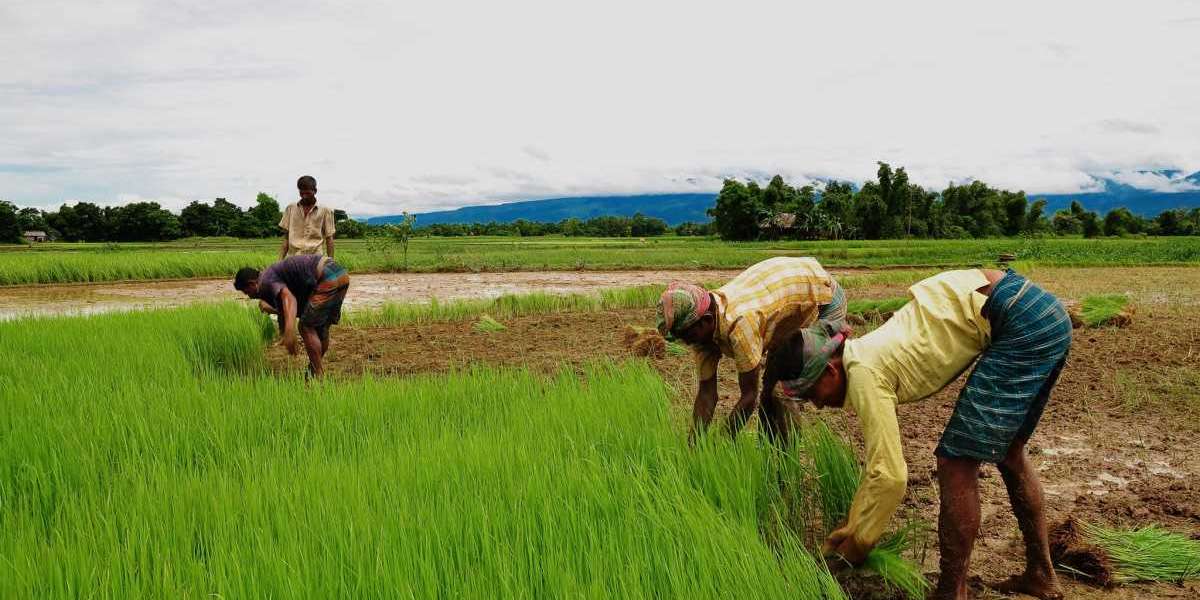Introduction
Farming in India is a fundamental aspect of the nation's economy and culture, sustaining a large portion of its population. Agriculture has been practiced in India for millennia, adapting and evolving with the advent of new technologies and techniques. This article delves into the various types of farming prevalent in India and the key agricultural implements used in these practices.
Types of Farming in India
- Subsistence Farming
Subsistence farming is one of the oldest forms of agriculture in India, primarily focused on growing food to meet the needs of the farmer's family. This type of farming is characterized by small landholdings, traditional methods, and low input usage. Farmers usually grow a variety of crops, including cereals, vegetables, and fruits, to ensure food security.
- Commercial Farming
In contrast to subsistence farming, commercial farming is geared towards the production of crops for sale in the market. This type of farming involves larger landholdings, modern techniques, and higher input usage to maximize yield. Common commercial crops include cotton, sugarcane, tea, coffee, and various fruits and vegetables.
- Plantation Farming
Plantation farming is a type of commercial farming where a single crop is grown on a large scale for export. This type of farming requires substantial capital investment and sophisticated management. Common plantation crops in India include tea, coffee, rubber, and spices like cardamom and pepper.
- Mixed Farming
Mixed farming combines crop cultivation with livestock rearing. This integrated approach helps farmers diversify their income sources and utilize their resources more efficiently. For instance, crop residues can be used as fodder for livestock, while animal manure can be used to fertilize fields.
- Organic Farming
Organic farming is gaining popularity in India as consumers become more health-conscious and aware of environmental issues. This type of farming avoids the use of synthetic chemicals, relying instead on natural inputs like compost and biological pest control. Organic farming aims to create a sustainable and eco-friendly agricultural system.
- Horticulture
Horticulture involves the cultivation of fruits, vegetables, flowers, and ornamental plants. This type of farming requires intensive labor and careful management but can be highly profitable. India is one of the largest producers of fruits and vegetables in the world, with diverse climatic conditions supporting a wide range of horticultural crops.
Agricultural Implements Used in Farming
Modern farming relies heavily on various agricultural implements to enhance productivity and efficiency. Below are some of the key implements used in Indian agriculture:
- Tractors
Tractors are indispensable in modern farming, providing the necessary power to perform a wide range of tasks. They are used for plowing, harrowing, planting, and transporting goods. Tractors come in various sizes and configurations, including mini tractors, which are ideal for small and marginal farmers due to their affordability and maneuverability.
- Plough
The plough is a traditional farming implement used for tilling the soil. It turns over the upper layer of the soil, bringing fresh nutrients to the surface while burying weeds and previous crop residues. Modern ploughs are often attached to tractors, allowing for more efficient and deeper plowing compared to manual methods.
- Seed Drills
Seed drills are essential for planting seeds at precise depths and intervals. This implement ensures uniform seed distribution, leading to better germination rates and healthier crops. Seed drills can be manually operated or tractor-mounted, depending on the scale of the farming operation.
- Rotavator
A rotavator is a versatile implement used for soil preparation. It combines the functions of a plow and a harrow, breaking up and aerating the soil while also leveling it. Rotavators are particularly useful for preparing seedbeds and incorporating crop residues or organic matter into the soil.
- Harvesters
Harvesters are machines designed to efficiently gather mature crops from the fields. There are various types of harvesters tailored to specific crops. For instance, combine harvesters are used for grains like wheat and rice, cutting, threshing, and cleaning the grain in one operation. Sugarcane harvesters are specialized machines that cut and collect sugarcane stalks.
Uses of Agricultural Implements
Tractors
- Plowing: Tractors can be equipped with different types of ploughs to prepare the soil for planting.
- Seeding: By attaching seed drills, tractors can sow seeds with precision.
- Transportation: Tractors can haul trailers loaded with crops, fertilizers, or other farm inputs.
- Irrigation: Tractors can be used to operate irrigation pumps and systems.
Plough
- Soil Preparation: Ploughs break up compacted soil, improving aeration and water infiltration.
- Weed Control: By turning the soil, ploughs help bury weeds and prevent their growth.
- Nutrient Cycling: Ploughing helps mix organic matter and nutrients within the soil, enhancing fertility.
Seed Drills
- Uniform Planting: Seed drills ensure seeds are planted at consistent depths and intervals, leading to uniform crop emergence.
- Increased Efficiency: Using seed drills reduces seed wastage and improves planting speed compared to manual methods.
Rotavator
- Soil Aeration: Rotavators break up soil clumps and improve soil structure, enhancing root penetration and water retention.
- Residue Management: They incorporate crop residues into the soil, promoting decomposition and nutrient cycling.
- Weed Control: Rotavators help manage weeds by cutting and burying them during soil preparation.
Harvesters
- Efficiency: Harvesters significantly reduce the time and labor required to gather crops compared to manual harvesting.
- Precision: Modern harvesters are equipped with advanced sensors and controls to minimize crop loss and damage.
- Versatility: Different types of harvesters can handle a variety of crops, making them versatile tools on the farm.
Conclusion
Farming in India is a diverse and dynamic sector, encompassing a wide range of practices and techniques. From traditional subsistence farming to modern commercial agriculture, Indian farmers utilize various agricultural implements to enhance productivity and sustainability. Tractors, ploughs, seed drills, rotavators, and harvesters are just a few of the essential tools that have revolutionized farming in India, helping to feed the nation and support its economy. As agriculture continues to evolve, the adoption of new technologies and sustainable practices will be crucial in ensuring the sector's long-term viability and success.








